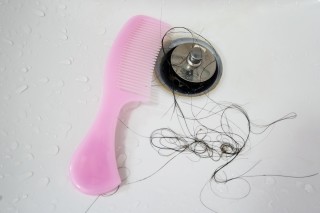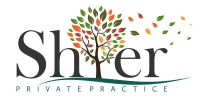Trichotillomania Treatment Scottsdale | Phoenix
Psychologists and psychiatrists at Shier Private Practice in Scottsdale, AZ specializes in the treatment of trichotillomania (hair-pulling disorder). Our private outpatient clinic offers a comprehensive psychiatric/medical assessment and treatment plan. Treatment may include medications, behavioral therapies or a combination of treatments.
What Is Trichotillomania?
 Trichotillomania, otherwise known as hair-pulling disorder, is a mental disorder that is characterized by recurrent, powerful urges to pull out one’s own hair from the scalp, eyebrows, eyelashes or other areas of the body. For individuals with trichotillomania, hair pulling can be used to relieve tension or distress or can be automatic. Hair pulling in individuals with trichotillomania may be done in rituals, such as finding hair with a certain texture to pull, eating the hair, or playing with hair that has been pulled out. The behavior may be accompanied or preceded by certain emotional states and the sites from which hair is pulled may change over time. Individuals with trichotillomania may make significant efforts to conceal hair loss or to stop hair pulling. Trichotillomania may be accompanied by skin picking, nail biting, and/or lip chewing. Hair pulling disorder is associated with high levels of distress as well as social and occupational impairment.
Trichotillomania, otherwise known as hair-pulling disorder, is a mental disorder that is characterized by recurrent, powerful urges to pull out one’s own hair from the scalp, eyebrows, eyelashes or other areas of the body. For individuals with trichotillomania, hair pulling can be used to relieve tension or distress or can be automatic. Hair pulling in individuals with trichotillomania may be done in rituals, such as finding hair with a certain texture to pull, eating the hair, or playing with hair that has been pulled out. The behavior may be accompanied or preceded by certain emotional states and the sites from which hair is pulled may change over time. Individuals with trichotillomania may make significant efforts to conceal hair loss or to stop hair pulling. Trichotillomania may be accompanied by skin picking, nail biting, and/or lip chewing. Hair pulling disorder is associated with high levels of distress as well as social and occupational impairment.
Trichotillomania has a 12 month prevalence of about 1%-2% in the general population. Females are 10 times more frequently affected by trichotillomania than males are. The onset of the disorder is most commonly aligned with the onset of puberty.
What Are the Symptoms of Trichotillomania?
The DSM-5 provides the following criteria for trichotillomania:
- Recurrent pulling out of one’s hair, resulting in hair loss
- Repeated attempts to decrease or stop hair pulling
- The hair pulling causes significantly significant distress or impairment in social, occupational, or other important areas of functioning
- The hair pulling or hair loss is not attributable to another medical condition
- The hair pulling is not better explained by the symptoms of another mental disorder
What Is the Cause of Trichotillomania?
Trichotillomania is a complex disorder, and is most likely caused by both genetic and environmental factors. Stressful situations or events may trigger trichotillomania in individuals with a genetic vulnerability. The disorder is more common in individuals with obsessive-compulsive disorder and first-degree relatives of individuals with OCD.
What Happens with Untreated Trichotillomania?
The usual course of trichotillomania is chronic, with waxing and waning symptoms if left untreated. A worsening in symptoms may be associated with hormonal changes in some females. Hair pulling symptoms may come and go for weeks, months or years at a time. Trichotillomania may cause irreversible damage to hair growth and quality as well as potential, yet infrequent, medical consequences such as digit purpura, musculoskeletal injury, dental damage, and blepharitis. The swallowing of hair sometimes associated with trichotillomania can lead to trichobezoars, abdominal complications, nausea, vomiting, and hematemesis.
How Is Trichotillomania Diagnosed?
Trichotillomania is diagnosed through a thorough biopsychosocial psychiatric evaluation and medical assessment used to rule out other psychological and medical conditions that may present with similar symptomatology.
Trichotillomania Treatment
There are several types of therapy that may be helpful in treating trichotillomania including habit-reversal training, cognitive therapy, and acceptance and commitment therapy. Habit reversal training works provides individuals with the resources to recognize situations that they might participate in hair pulling behaviors and substitute hair pulling with other behaviors. Cognitive therapy may be used to identify and change distorted beliefs associated with hair pulling. Finally, acceptance and commitment therapy can help individuals learn to accept hair-pulling urges and refrain from acting on them.
How To Cope
- Maintaining a balanced lifestyle can help an individual manage maladaptive, anxiety driven urges.
- Support groups – Find a support group of individuals with trichotillomania so you can interact with others who experience the same challenges as you do.
- Hobbies – Develop your interests through proactive hobbies that may distract you from hair-pulling urges.
- Relaxation techniques – Participating in mindfulness meditation and deep breathing exercise can reduce stress levels so you can refrain from triggered hair-pulling episodes.
- Exercise – 30 minutes of daily aerobic exercise may help you manage trichotillomania by reducing your anxiety levels and distracting your attention from hair-pulling rituals.
Last update: February 25, 2019
The content on this website is not intended to be a substitute for professional medical advice, diagnosis, or treatment. Always seek the advice of your physician or other qualified health provider with any questions you may have regarding a medical condition.
